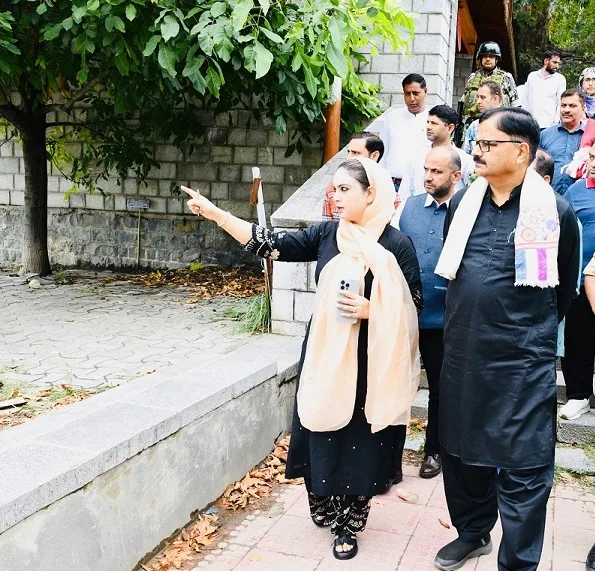Srinagar, Aug 24: Minister for Jal Shakti, Javed Ahmed Rana, today assessed Jammu and Kashmir’s preparedness for flood control in light of the ongoing monsoon season and potential flood risks with Chief Engineers and other senior officers.According to a statement issued here, Rana reviewed the readiness and infrastructure to handle emergency situations, especially in flood-prone areas across the region.The Minister directed officials to ensure round-the-clock monitoring of water levels across all major river systems, with particular focus on the Jhelum, Ravi and Tawi rivers and their tributaries. He also visited Flood Control and Management Room Ram Munshi Bagh Srinagar and stressed the importance of real-time dissemination of early warning signals to all concerned departments, agencies, and stakeholders to enable swift and coordinated responses.Officials from the Flood Control Department informed the Minister that the department is fully equipped and operationally prepared to handle any flood-related exigency. A comprehensive monitoring mechanism is already in place, leveraging advanced technology, integrated response systems, and field-level preparedness.In a major development to boost flood preparedness and communication, the Minister was informed that the department—working in collaboration with the Information and Forecasting Cell (IFC)—has developed the Kashmir Flood Watch App. This mobile application provides real-time updates on water levels in the Jhelum and its key tributaries, drawing data from a network of automatic water level recorders.The app plays a critical role in issuing early warnings and supporting informed, timely decision-making during emergencies.Currently, the department operates automatic water level sensors and automatic rain gauge sensors, strategically installed at vulnerable locations across the Valley. These sensors offer continuous, accurate data, enabling authorities to closely monitor changes in water levels and rainfall patterns.To ensure an organised and effective flood response, an extensive institutional framework has been established. This includes a Central Flood Committee, District Coordination Committees, Flood Zonal Committees, Sectors, and Beats—each assigned specific roles and responsibilities to ensure smooth coordination, resource mobilization, and on-ground execution.On the logistics front, the Minister was informed that an ample stock of EC bags has been prepared—many of which are already filled and strategically placed for immediate use during emergencies.
Search
Archives
- August 2025
- July 2025
- June 2025
- May 2025
- April 2025
- March 2025
- February 2025
- January 2025
- December 2024
- November 2024
- October 2024
- September 2024
- August 2024
- July 2024
- June 2024
- May 2024
- April 2024
- March 2024
- February 2024
- January 2024
- December 2023
- November 2023
- October 2023
- September 2023
- August 2023
- July 2023
- June 2023
- May 2023
- April 2023
- March 2023
- February 2023
- January 2023
- December 2022
- November 2022
- October 2022
- September 2022
- August 2022
- July 2022
- June 2022
- May 2022
© 2022 Foxiz News Network. Ruby Design Company. All Rights Reserved.






